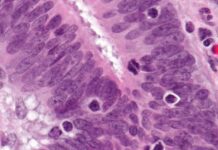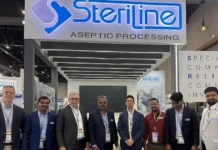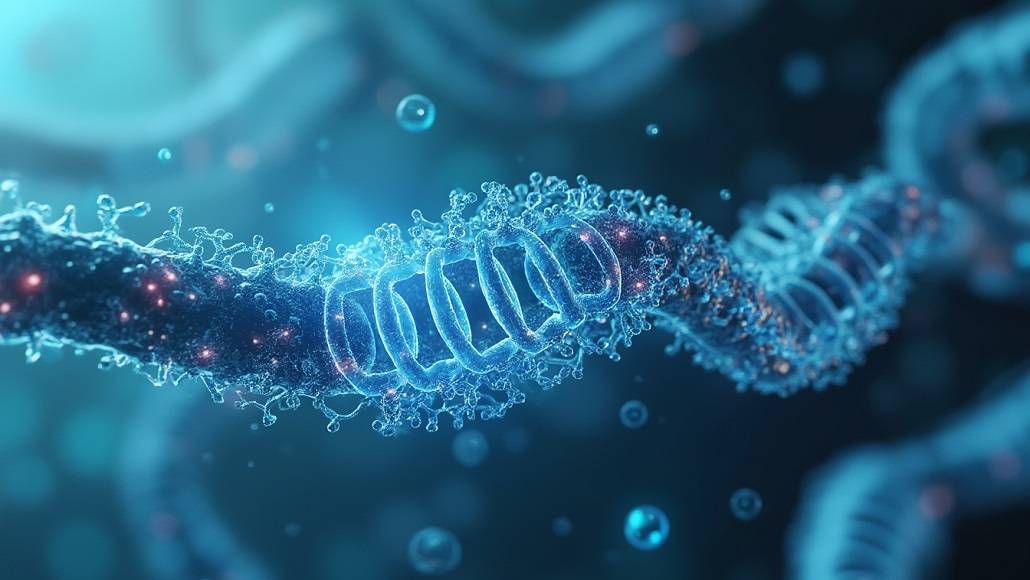LL-37, a 37-amino acid peptide derived from the cathelicidin antimicrobial peptide precursor hCAP18, has emerged as a molecule of considerable research interest. Encoded by the CAMP gene, LL-37 is the only known cathelicidin and is expressed in a variety of cell types, including neutrophils, epithelial cells, and macrophages.
The peptide’s amphipathic, alpha-helical structure and cationic charge are theorized to underlie its diverse biological properties, ranging from antimicrobial activity to immunomodulation and tissue repair. As research into host defense peptides expands, LL-37 is being increasingly explored for its potential implications across immunology, microbiology, oncology, and regenerative research.
Structural Features and Expression Patterns
LL-37 is produced through proteolytic cleavage of hCAP18 by serine proteases such as proteinase 3. The mature peptide is released at sites of inflammation or infection, where it may interact with microbial membranes, host cells, and extracellular matrix components. Its amphipathic nature is believed to allow it to associate with lipid bilayers, while its positive charge facilitates binding to negatively charged microbial surfaces.
Expression of LL-37 has been detected in a wide range of tissues, including the skin, lungs, gastrointestinal tract, and reproductive organs. It is also present in organismal fluids such as saliva, sweat, and seminal plasma. The peptide’s production is supported by various stimuli, including microbial components, inflammatory cytokines, and vitamin D, suggesting a tightly regulated role in innate immunity.
Antimicrobial Properties and Biofilm Disruption
One of the most extensively studied properties of LL-37 is its antimicrobial activity. Studies suggest that the peptide may exert broad-spectrum antimicrobial impacts against Gram-positive and Gram-negative bacteria, fungi, and enveloped viruses. It is hypothesized that LL-37 might disrupt microbial membranes through electrostatic interactions, leading to membrane destabilization and cell lysis.
In addition to its direct antimicrobial action, LL-37 is believed to inhibit biofilm formation and degrade established biofilms. This is particularly relevant in the context of persistent infections, where biofilms protect microbial communities from immune responses and antimicrobial agents. Investigations purport that LL-37 may interfere with quorum sensing and extracellular polymeric substance production, thereby weakening the structural integrity of biofilms.
Immunomodulatory Research Potential
Beyond its antimicrobial role, LL-37 is increasingly studied for its potential immunomodulatory properties. Research suggests that the peptide may function as a chemoattractant for immune cells, including neutrophils, monocytes, and T cells, through its interaction with formyl peptide receptor-like 1 (FPRL1). It has been hypothesized that LL-37 may support the creation of pro-inflammatory cytokines, such as IL-6, IL-8, and TNF-α, while also exhibiting anti-inflammatory effects under certain conditions.
This duality suggests that LL-37 may play a context-dependent role in immune regulation. For instance, during early infection, the peptide is thought to amplify inflammatory responses, facilitating pathogen clearance. In contrast, during chronic inflammation, it may contribute to immune resolution by modulating cytokine profiles and promoting the recruitment of regulatory cells.
Wound and Tissue Research
LL-37 has also been speculated to be implicated in tissue repair and regeneration. Investigations purport that the peptide may promote keratinocyte proliferation and migration, processes essential for re-epithelialization during wound healing. It has been theorized that LL-37 may stimulate the expression of growth factors, such as epidermal growth factor (EGF) and vascular endothelial growth factor (VEGF), thereby supporting angiogenesis and tissue remodeling.
Moreover, LL-37’s potential to modulate extracellular matrix components and fibroblast activity suggests a broader role in tissue homeostasis and fibrosis research.
Antiviral and Antifungal Research
LL-37’s antimicrobial spectrum is thought to extend to viruses and fungi, making it a candidate for research into non-traditional antiviral and antifungal strategies. The findings suggest that the peptide may inhibit viral entry by binding to viral envelopes or host cell receptors, thereby preventing fusion and replication. It has been hypothesized that LL-37 might also interfere with intracellular signaling pathways required for viral propagation.
In fungal models, LL-37 has been linked to membrane disruption and the inhibition of hyphal growth. These properties are being explored in the context of opportunistic fungal infections, particularly in immunocompromised research models.
Oncological Implications
LL-37’s potential role in cancer biology is complex and context-dependent. Investigations purport that the peptide may exhibit both pro-tumorigenic and anti-tumorigenic properties, depending on the tumor type and microenvironment. In some models, LL-37 has been linked to better-supported tumor cell proliferation, migration, and angiogenesis, possibly through the activation of signaling pathways, including ERK1/2 and STAT3.
Conversely, in other contexts, LL-37 might induce apoptosis and inhibit tumor growth by disrupting mitochondrial function or modulating immune responses. These divergent impacts have led to its inclusion in research on tumor microenvironment modulation, cancer immunotherapy, and peptide-based pharmaceutical exposure systems.
Neurological and Neuroinflammatory Research
Emerging data suggests that LL-37 may also play a role in the central nervous system. The peptide has been detected in cerebrospinal fluid and is hypothesized to play a role in supporting neuroinflammatory processes. It seems to modulate microglial activation and cytokine production, thereby supporting the progression of neurodegenerative diseases.
Peptide Engineering and Stability Challenges
Despite its promising properties, LL-37 is susceptible to proteolytic degradation, which may limit its stability in experimental systems. To address this, researchers have developed analogs and cyclized derivatives with better-supported resistance to enzymatic breakdown. These modified peptides retain antimicrobial and immunomodulatory properties while exhibiting improved pharmacokinetic profiles.
Peptide engineering efforts have also focused on optimizing LL-37’s amphipathic structure to support membrane selectivity and reduce cytotoxicity. These strategies are being explored in the development of peptide-based biomaterials, antimicrobial coatings, and targeted exposure systems.
Future Directions and Research Considerations
While LL-37’s properties are well-documented in experimental models, many questions remain regarding its precise mechanisms of action, receptor interactions, and long-term impacts. Future research may focus on high-resolution structural studies, transcriptomic profiling, and systems biology approaches to elucidate the peptide’s role in complex biological networks.
Comparative studies with other antimicrobial peptides may also help clarify LL-37’s unique features and inform the design of next-generation peptide analogs. Additionally, interdisciplinary collaborations among immunologists, microbiologists, and materials scientists may accelerate the translation of LL-37-based technologies into practical and industrial implications.
Conclusion
LL-37 represents a compelling example of a multifunctional peptide with diverse properties spanning antimicrobial defense, immune modulation, tissue regeneration, and oncological research. Its structural versatility and hypothesized mechanisms of action have positioned it as a valuable tool in experimental science. As research continues to uncover the peptide’s full potential, LL-37 may serve as a blueprint for the development of novel biomimetic strategies aimed at supporting cellular resilience, promoting repair, and managing microbial threats. Visit https://biotechpeptides.com/.



















